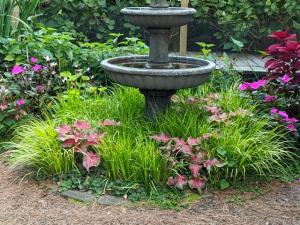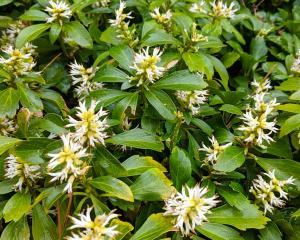Mill Pond Garden recommends evergreen ground covers
Mill Pond Garden has a collection of evergreen ground covers that do well in the Cape region.
Evergreen ground covers are under-used treasures that deserve consideration. They are highly visible in the winter landscape where they really show their virtues. Evergreen ground covers save annual mulching of beds while providing living beauty year-round. The deeper ground covers like Pachysandra hide fallen leaves and twigs, so they compost and recycle debris out of sight.
There are many wonderful evergreen ground covers, each with its own best use. Mill Pond Garden recommends going for a mix of species to add more beauty to the garden than a single ground cover can provide. Ground covers are low-growing plants that serve many different purposes. Besides suppressing weed growth, they stabilize slopes and prevent soil erosion, encourage beneficial soil microbes, and give shelter to overwintering beneficial insects and pollinators. They add interest, color and texture to the landscape. The maintenance is relatively low, with some only needing cutting back now and then. Many of them are fragrant, and some produce wonderful flowers.
In the Cape Region climate, deciduous ground covers die back and go dormant in the winter months, leaving ground exposed and open to weeds. To provide year-round cover for a particular garden area, evergreen ground cover varieties are the right choice. The low-growing evergreen plants provide visual interest at a time when many other plants are completely dormant, totally transforming a garden.
There are a few evergreen ground covers to avoid because they are aggressively invasive here, including English ivy and Wintercreeper Euonymous. Some are so very short, like the speedwells, cranberry, bearberry, mondo grass and ajuga, all less than three inches high, they do not effectively suppress weeds nor compete well with nearby taller plants. Mill Pond Garden recommends the evergreen ground covers that have proven themselves here and accomplish all the goals of ground covers.
Top of the list for local gardens is Pachysandra, which blooms fragrantly in early spring to benefit native bumblebees and has moderate fleshy roots that allow other perennials to grow among them easily. It tolerates full sun but looks best with some shade. Pachysandra will grow over maple roots and other densely rooted trees that are usually bare of growth over the root zone. Others that provide variety and interest include, for shade to part sun: hellebores, Liriope, periwinkle, Rohdea, Saxifraga stolonifera, tassel fern, and holly fern. For part to full sun, try evergreen garden sage, Acorus and low-spreading juniper shrubs.
Hellebores now have hybrids that hold their large flowers face up, which makes them spectacular in winter and spring. Abundant large flowers all winter are now possible. To see this diverse collection of species and cultivars that do well locally, visit Mill Pond Garden in winter or early spring.
Mill Pond Garden, the only professional public horticultural garden in the Cape Region, is a small, nonprofit botanical garden on Red Mill Pond promoting sustainability, four-season gardens and wildlife habitat gardening along with choice plants for area gardens.
For more information, go to millpondgarden.com.





















































